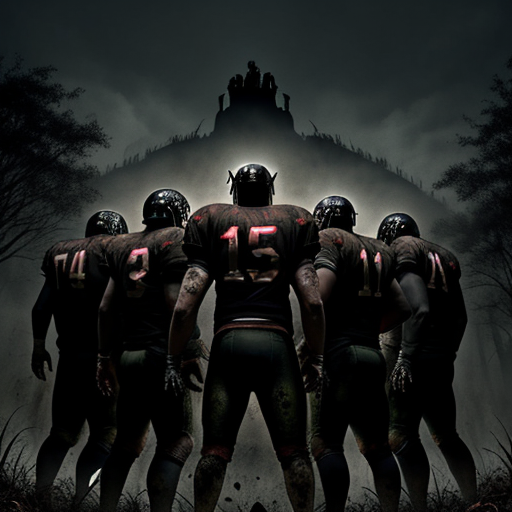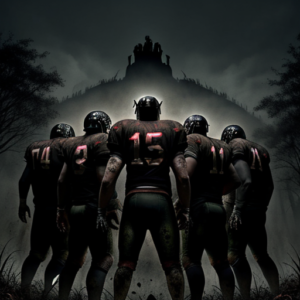This article focuses on building lineups with a quality foundation by utilizing the powerful Groups and Rules/Limits tools within the industry’s optimization tools. All of the concepts and pairings included below can be applied to hand-building as well. The goal is to create lineups that have high-scoring correlation and take advantage of combined outcomes within stacks while limiting the likelihood of building inefficient or negatively correlated entries for a full slate of NFL DFS lineups.
This video was made in a former life and features a detailed demonstration of how to apply these concepts in one leading optimizer tool: Fantasy Cruncher – How-To Video
All references to Sims were done via friends of the site: acemind.io
Don’t miss the new Above/Below feature article for a few of our top picks
Week 15 DraftKings & FanDuel NFL DFS Stack Rankings
The following stack rankings were created by pairing each team quarterback with his top three scoring options, whether they are three wide receivers, two wide receivers and a tight end, a wide receiver, tight end, and running back, or any viable combination. In some cases, an expensive running back, such as Tony Pollard, can push the overall price point of his team stack in the value rankings.
Week 15 DraftKings & FanDuel NFL DFS Stacks & Optimizer Groups
Overview
Rules and limits are powerful tools for lineup creation for NFL DFS where our primary focus is creating highly correlated lineups via stacking players from the same game. Lineups will typically be coordinated around the quarterback selection, which informs at least one pass-catcher choice, establishes a budget, eliminates a defense, and sets the tone for the lineup. We will typically look to correlate a quarterback and at least one of his pass-catchers in every lineup, with most of those including a skill player from the opposing team who will have a chance to support the stack in a high-scoring game that drives offense on both sides to create additional correlated scoring potential. Stacking multiple pass-catchers in the same lineup is a sound approach as well, though there are typically overall ceilings on how much volume is available at any given position. We do not typically include running backs who are not pass-catchers as priorities in NFL DFS groups, they typically stand alone with the selection of the quarterback-based stack informing remaining salary which then informs the running back selections. High-volume backs and pass catchers out of the backfield can be included in the groups utilized below, but it is frequently not necessary to do so with the very best players, they arrive in lineups without help.
The following rules and limits are typically applied in an optimizer’s Advanced Options menu. Notes are included to elucidate the reasons behind each rule and to explain what it does during the lineup creation process. These settings can typically be saved for re-use, which is highly recommended. Saving the groups that will be created below is also a very good idea to save time with updates instead of recreation each week. These groups are created manually, but most optimizers include automated group creators that can help accelerate the curation process.
DraftKings + FanDuel Settings & Advanced Options
Unique Players Per Lineup– This setting forces the optimizer to utilize at least X new players who were not in Lineup 1 when it creates Lineup 2, and so on. It is recommended to utilize at least two, and more can be applied depending on the degree of differentiation desired within lineups.
Team Salary– a minimum or maximum salary spend can be applied here as needed, though this is not a part of the recommended process in this space as leaving salary on the table is an easy path toward creating unique lineups while not necessarily making a negative expected value play.
FLEX position– allows restrictions on what positions can be rostered at the FLEX spot. The only position to consider in this case is tight end, but that is something to be restricted at the individual level via Groups, rather than at the global level.
Global Exposure Setting – allows caps on the maximum percentage of lineups a player can appear in within a given pool of lineup construction. This is a powerful tool for shaping lineups but if settings are too low attempts to build a full set will fall short due to a lack of available players, one of the most common errors in optimizer building. Most optimizers include the ability to calculate ownership caps continuously or at the end of the pool creation process. If caps are calculated continuously, a player with a 25% cap who is utilized in Lineup 1 will not be available for use again until Lineup 5 , we recommend turning OFF continuous calculation.
Randomness – provides a random multiplier to each player’s projected point total based on the set values. This is a valuable tool that helps differentiate lineups instead of simply creating them in order of highest median projected scores. Using some randomness for lineup generation is strongly recommended but the degree to which it is applied is down to personal preference, but 15-25% is fine to get started. We suggest heavier randomness to more event-based players like wide receivers while tracking volume-based positions like running backs more toward their median or ceiling projections.
DraftKings + FanDuel Team Stack Rules
This set of rules will force optimizers to build lineups with certain combinations. We are looking to stack at least one skill player, almost always a pass-catcher, with his quarterback while also playing a skill player from the opposing team in the lineup. The theory behind this build is that a high-scoring stack will require some response from the opposing team to deliver a ceiling score in most situations. When that is not the case, the team that is winning will simply slow down and run out the clock. Most optimizers utilize a “complete the sentence” approach for rule creation with selections from drop-down menus following a very straightforward logic. Exceptions to these rules can be added for specific teams and players on most optimizer products.
- QB with at least one WR/TE from Same Team (note: It is fine to set this to two or to utilize two versions of this rule, one with WR/TE and one with RB/WR/TE, but we refine this via Groups)
- QB with at least one RB/WR/TE from the Opposing Team (this is an optional setting that is taken care of in the groups settings as well we typically prefer the pass-catchers but high-volume running backs can be effective here)
- QB with at most zero DST from the Same Team (this is a personal preference; high-scoring teams and quarterbacks tend to leave their defenses on the field, exposing them to simple point-scoring negatives)
Limits & Custom Rules and Requirements
Limit rules can be applied to restrict certain combinations from coming together. This is powerful for limiting multiple running backs from the same team or getting overweight to a certain stack within a lineup.
- Limit QB/RB/WR/TE from Same Team to three
- Limit RB/WR/TE from the Same Team to one unless paired with QB from the Same Team OR the Opposing Team
- Limit RB from Same Team to one (we also do this with WR in a separate rule that adds an “unless paired with QB or opposing QB” but it’s a personal preference for NFL DFS, we typically do not want two pass-catchers from the same team without their quarterback)
We will maintain the list of rules and limits throughout the season, with occasional tweaks, if needed. Each week sees yet another fresh crop of value plays as situations change and injuries create opportunities around the league. These changing roles and emergent value plays are accounted for in the process of creating these groups from week to week. After a large pool of lineups is created utilizing these groups, it is still of critical importance to filter them for factors including ceiling projections and leverage potential. These groups should help ensure that a highly correlated premium set of options that rotates through a variety of combinations is utilized to create the full lineup pool.
Sunday Updates
Any changes and recommended boosts to specific players will be provided in an early morning update each Sunday.
NFL DFS Week 15 Features & FREE Projections
- Week 15 FanDuel & DraftKings Saturday Projections – FREE
- Week 15 Above/Below – Key Picks
- Week 15 Quarterback Scoring & Value Rankings
- Week 15 Running Back Scoring & Value Rankings
- Week 15 Pass-Catcher Scoring & Value Rankings
- Week 15 Defense Scoring & Value Rankings
Construction Concept
Team groups are built by utilizing the quarterback as the KEY player in group settings. The quarterback decision in each lineup is the driving factor in which stack is utilized in that lineup and which corresponding plays are then made to work within the structure and requirements. Built to specification, each team will have two groups, a team group, and an opponent group, both of which utilize the same quarterback as the key player. Each game will have a total of four groups. This is the best approach to truly capture the requirement of playing individual “run-back” plays from the opposing team. A more basic approach would be to include all of the skill players from a game in each quarterback’s group and rely on rules and limits to restrict any potential overflow. It is highly recommended to save the Week 1 groups as a foundation that will be updated for the rest of the season. The recommended groups will include skill players who have an active role in their offense and provide significant correlation with their quarterback’s scoring, often bell-cow running backs who do not specialize in the passing game will not be included in groups as they are projected highly and appear on their own in basically correct distributions, while also not always providing the strongest positive correlation plays. Stacking quarterbacks with pass-catchers and allowing running backs to fall into the lanes then created by settings, available salary, and randomness should create a well-distributed set of quality lineups. These groups are updated weekly to account for changes in utilization, schemes, injuries, target shares, and more.
Team Groups for DraftKings & FanDuel – Week 15
The goal is to create a large pool of well-built lineups that can be utilized in any large-field GPP contest. Our approach is to build far more lineups than needed and utilize a sorting table or sim process to filter to the best set of lineups for entries. The lineups created in these crunches should provide a broad distribution that includes some of the lower-owned high-upside skill players from each stack. Applying boosts is critical in pushing and pulling ownership to individual players within their team’s stacked lineups if they are appearing too much or too little.
The groups below are designed so that each quarterback will have two groups to create, one with his skill players and another with the opposing team. A more basic approach would be to add them all to one large group with an “at least three” and let rules and limits set things, but there is a more granular level of control in creating them separately.
Utilizing two groups also allows us to place running backs into the “run-back” position in certain teams while not including them in the primary stack for their team. This is useful when there is a situation with an extremely highly projected running back who does not necessarily fit into his team’s passing game. These players are threaded throughout the following construction recommendations.
Note for the Rotogrinders optimizer, we recommend trimming the automatically created groups that can be accessed under Team Groups, Opponent Groups, and Max Position Groups to match these groups for lineup building. We typically utilize the Stacks tab to enforce constructions as well, but a key requirement is missed in the automated groups. The Max Position groups need the manual addition of the running backs and tight ends to the group that is created with the wide receivers with a setting of max 1 and the team’s quarterback selected as a key player with the designation of using that group when the quarterback is NOT in the lineup. This is done to eliminate the possibility of three skill players from the same team appearing at running back, tight end, and wide receiver together without their quarterback involved. A simple limit of three players per team will keep things to just a quarterback with two skill players in stacks after that. Update: if one were to reset their saved settings on RG’s optimizer new options will reveal themselves, including thankfully a toggle to take care of this from the main build rules page. There is also a non-QB group with a max-1 setting that works better for this purpose because the toggle on the main page will limit stacks to just a 1-1 combination, seemingly as a bug.
Note for all optimizers the rules can be utilized to force bring-back plays in some sets of crunches and turned off for others as a global function instead of changing each group to “exactly one” bring-back play, wherever applicable, but it will apply to all teams.
Cincinnati Bengals
Key Player: Jake Browning
Setting: at least one
Team Group: Joe Mixon, Ja’Marr Chase, Tee Higgins, Tyler Boyd, Tanner Hudson, Chase Brown, Trenton Irwin (large field)
Opposing Setting: at most two
Opposing Group: Justin Jefferson, TJ Hockenson, Ty Chandler, Jordan Addison, KJ Osborn
Lineup Notes: As with recent games, the Bengals will go as far as Jake Browning can take them, he ranks as our third-highest projected quarterback of the slate, partly on the back of the quality weapons to whom he will be throwing the ball. Ja’Marr Chase is a superstar option who can make any quarterback better and who still lands as one of the top skill players of the slate. Chase is joined by Higgins, Boyd, and tight end Tanner Hudson, as well as running back Joe Mixon, who has involvement in the passing game and can absolutely be included in groups for a short slate. Chase Brown is a big play value options and Trenton Irwin is a large field tournament dart throw. The Vikings have high-end skill players in Justin Jefferson and TJ Hockenson for bring-back play, they will be working with Nick Mullens at quarterback, so the situation is similar on both sides.
Denver Broncos
Key Player: Russell Wilson
Setting: at least one
Team Group: Courtland Sutton, Jerry Jeudy, Javonte Williams, Samaje Perine, Marvin Mims Jr., Adam Trautman
Opposing Setting: at most two
Opposing Group: Amon-Ra St. Brown, Sam LaPorta, David Montgomery, Jahmyr Gibbs, Jameson Williams, Josh Reynolds (Q), Kalif Raymond
Lineup Notes: Russ Wilson is our most highly projected quarterback of the day, playing across from our 2nd most highly projected option. This game has the potential for scoring but both teams are capable of moving the ball through the air before scoring on the ground. There are many ways to put together combinations of this game stack that are high-end and appealing on the short slate. Broncos receivers rank well in our model, as do the typically highly placed premium options from the Lions, both teams offer quality value plays and bring-back potential for the three-game slate.
Detroit Lions
Key Player: Jared Goff
Setting: at least one
Team Group: Amon-Ra St. Brown, Sam LaPorta, David Montgomery, Jahmyr Gibbs, Jameson Williams, Josh Reynolds (Q), Kalif Raymond, Donovan Peoples-Jones (large field)
Opposing Setting: at most two
Opposing Group: Courtland Sutton, Jerry Jeudy, Javonte Williams, Samaje Perine, Marvin Mims Jr., Adam Trautman
Lineup Notes: The Lions’ two-headed backfield could poach touchdowns from the passing game while remaining a somewhat unpredictable split. Both Jahmyr Gibbs and David Montgomery are high-end running backs with potential on the short slate, they can be deployed in some lineups together, though that is probably still not the idea approach. Amon-Ra St. Brown and Sam LaPorta are high-priority pass catchers and the Lions have interesting options further down the depth chart, particularly the big play potential lurking in Jameson Williams.
Indianapolis Colts
Key Player: Gardner Minshew II
Setting: at least one
Team Group: Michael Pittman Jr., Josh Downs, Alec Pierce, Zack Moss, Kylen Granson, Will Mallory, Mo Allie-Cox
Opposing Setting: at most two
Opposing Group: Jaylen Warren, Najee Harris, Diontae Johnson, George Pickens, Pat Freiermuth
Lineup Notes: Zack Moss joins us as, once again, a popular value selection despite disappointing at hefty ownership the last two weeks running. Moss has the reins in the backfield with Jonathan Taylor out, but we remain somewhat behind the industry average projection for the third week in a row and we will be hoping to come up short on the option after landing close to the field each of the last two weeks. The Colts’ passing game is interesting, with several good receivers and a capable quarterback, who is one of only six options, only two of whom were starters at the season’s outset. Minshew has posted high-scoring fantasy games in the past and he has the luxury of working with Michael Pittman and Josh Downs, as well as Alec Pierce and his trio of tight ends. The Steelers are a mixed bag on the other side of this game, they have a two-headed backfield with a talent and touches mismatch and their passing game has been a mess despite talent at both the wide receiver and tight end positions. Any of the skill players are options this week, the slate is very short, but getting overweight to too many Steelers shares is a potential liability, even in bring-back plays.
Minnesota Vikings
Key Player: Nick Mullens
Setting: exactly one
Team Group: Justin Jefferson, TJ Hockenson, Ty Chandler, Jordan Addison, KJ Osborn, Brandon Powell (large field)
Opposing Setting: at most one
Opposing Group: Joe Mixon, Ja’Marr Chase, Tee Higgins, Tyler Boyd, Tanner Hudson, Chase Brown
Lineup Notes: The Vikings are one of the potentially high-end passing attacks of the slate, with Justin Jefferson back and premium tight end TJ Hockenson, but it will all come down to the play of veteran backup Nick Mullens, who draws the start over Joshua Dobbs after replacing him in last weekend’s embarrassing 3-0 victory. Mullens is not a high-end option, but he is inexpensive on a slate with very few angles and only two quarterbacks with significantly higher expectations. The weapons at Mullens’ disposal can help him post a decent game and if Tommy DeVito can win a fantasy slate at cheap pricing with no talented receivers, Nick Mullens certainly can with the hyper-talented Jefferson. The Bengals offer strong bring-back options across the board, this is a game that provides many options at a variety of prices on the short slate.
Pittsburgh Steelers
Key Player: Mitch Trubisky
Setting: exactly one
Team Group: Jaylen Warren, Najee Harris, Diontae Johnson, George Pickens, Pat Freiermuth, Allen Robinson (large field), Calvin Austin III (large field), Connor Heyward (large field)
Opposing Setting: at most two
Opposing Group: Michael Pittman Jr., Josh Downs, Alec Pierce, Zack Moss
Lineup Notes: Probably the least appealing team on the board, the Steelers have a split backfield that slightly favors Najee Harris, with both him and Jaylen Warren providing low-level production on split touches. In last week’s game, Warren carried the ball seven times and caught four of five passes, while Harris had 12 carries and caught three of three opportunities. Both backs are in play and they are inexpensive enough that they can potentially be paired in lineups on the short slate. The Steelers’ passing game will be relying on Mitch Trubisky to post a better outing than he did in going 22-35 for 190 yards, one touchdown, and one interception last week. Trubisky has good options in Diontae Johnson, George Pickens, and Pat Freiermuth, anyone lower than that on the depth chart is a total dart throw in large field tournament play only.
Follow Us on Twitter. Join us in Discord. Subscribe to the YouTube Channel.







